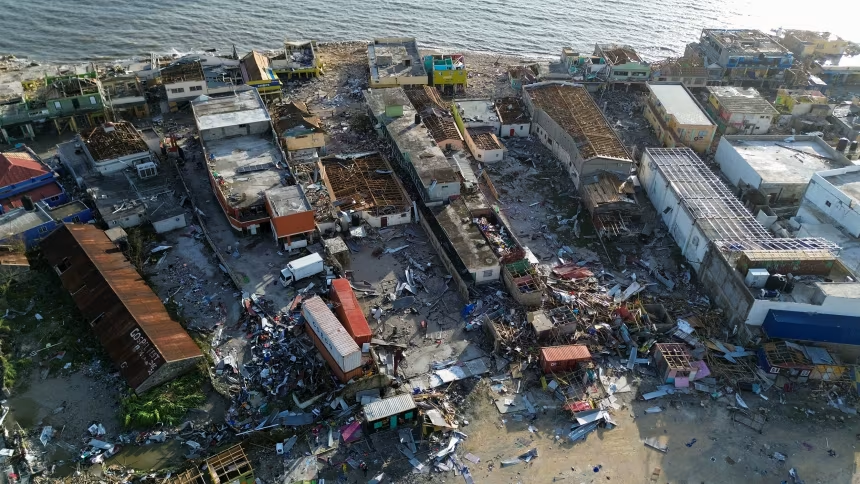Jamaica Faces Unprecedented Destruction from Hurricane Melissa
Rescue operations continue across the Caribbean after Hurricane Melissa carved a devastating path through the region. It left thousands displaced and entire communities submerged. In Jamaica, the Category 5 storm made landfall with sustained winds of over 185 mph. The storm tore through infrastructure, power grids, and coastal communities. The country’s Office of Disaster Preparedness and Emergency Management (ODPEM) reported that more than 140,000 residents were cut off from essential services as floodwaters engulfed roads and bridges.
Authorities in Kingston confirmed that at least four people were found dead in St. Elizabeth Parish. More casualties are expected as search teams reach the island’s hardest-hit southern regions. Desmond McKenzie, Jamaica’s Minister of Local Government and Community Development, described the nation’s infrastructure as “severely compromised.” He added that the recovery process from the devastation Hurricane Melissa caused in the Caribbean could take months.
Jamaica’s tourism industry also faces severe disruption. With roughly 25,000 international visitors still stranded, resorts and local airports have turned into makeshift shelters. The Jamaica Tourist Board is coordinating emergency flights in collaboration with regional partners to ensure the safe evacuation of travelers.
Cuba Battles Widespread Flooding and Massive Evacuations
The storm’s destructive force did not end in Jamaica. Crossing the Caribbean Sea, Hurricane Melissa struck Cuba as a Category 3 system. It unleashed torrential rainfall and triggered widespread mudslides. More than 735,000 people were evacuated as part of Cuba’s pre-emptive disaster management strategy. It was one of the most extensive operations since Hurricane Irma.
Cuban President Miguel Díaz-Canel confirmed “extensive damage” across the eastern provinces. This included Santiago de Cuba and Holguín. Hundreds of rural communities remain isolated due to washed-out roads. According to the Cuban Institute of Meteorology, some regions received more than 20 inches of rain within 24 hours. This overwhelmed local drainage systems and caused rivers to breach their banks.
The storm also crippled the national electrical grid, leaving millions without power. Efforts to restore electricity and clean water are ongoing, with international relief agencies mobilizing resources to provide immediate assistance. Hurricane Melissa has left a mark of devastation in 2025 for the whole Caribbean.
Haiti Records Highest Death Toll Amid Widespread Flooding
While Hurricane Melissa did not make direct landfall in Haiti, the country bore the heaviest human cost. Torrential rains triggered deadly floods and landslides that claimed at least 23 lives, according to the Haitian Civil Protection Directorate. In Petit-Goâve, a swollen river burst its banks, sweeping away homes and entire families. Among the victims were ten children, highlighting the storm’s devastating impact on vulnerable communities.
Local officials report that thousands of residents remain unaccounted for, and emergency shelters are operating beyond capacity. The Haitian government has appealed for international aid as the country confronts a worsening humanitarian crisis. Clean water shortages and disease outbreaks are already emerging in the wake of the flooding.
Meanwhile, the World Food Programme has begun distributing emergency rations. Additionally, the neighboring Dominican Republic is providing logistical support for cross-border aid shipments.
As Hurricane Melissa moves north toward Bermuda, meteorologists warn that its residual energy could still generate dangerous swells and storm surges along the Atlantic coastline. For the Caribbean, however, the scars of devastation left behind by this historic storm in 2025 will take far longer to heal.







